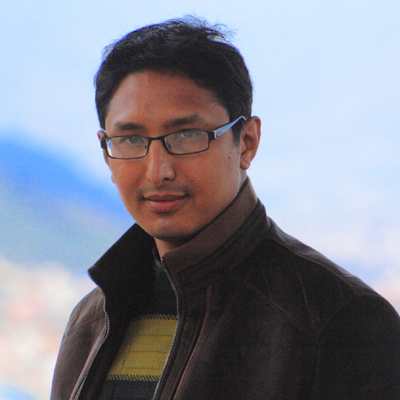Columns
Why the study of Nepali art history is important
Sound knowledge of art history can help promote Nepal’s ancient and medieval heritage internationally.
Suyog Prajapati
Ancient Chinese explorers, 19th-century European travellers, and modern-day scholars have all praised the ingenious work of Nepali artists and artisans. When Nepal opened to the world in the 1950s, numerous scholars entered the country to study its unique art and tradition. But today, few parents would encourage their children to take up art and pursue it academically, for they feel there are more marketable careers like engineering, medicine, or banking. I was in a similar situation pursuing a career in chemistry. But now I have decided to study art history.
What makes Nepali art so distinctive that we need to study it thoroughly, and how can studying art history benefit every Nepali, no matter their career?
Art is an expression of human thought onto a physical medium; history refers to a scientific study of the past. Art history looks at past human endeavours through the lens of visual expressions. Be it terracotta figurines, stone sculptures, woodcarvings or paintings, art history interprets these works relative to the political, economic, and philosophical atmosphere of a particular time.
Nepali art is diverse and complex. Traditional art here includes intricate floral patterns, mythical beings, and the complex fusion of Hindu, Buddhist, and indigenous elements using various materials like wood, stone, metal, and cloth. Even a small temple often contains struts, tympanums, and door façades with many details like stylised lotus blooms, Makara (a mythical aquatic beast), gryphons, lions and multi-armed deities. Hindu temples such as the Krishna Mandir and Pashupatinath and Buddhist sites such as Swayaṃbhū and Vajrayoginī are like open-air museums for ancient and medieval art and architecture.
The distribution of Nepali art in the three cities of Kathmandu, Bhaktapur, and Patan among other regions throughout the hills and Himalayas is a reminder of the country’s glorious past. Wang Hwang Tse, a 7th-century Chinese traveller on his way back to China from India described the court of the Nepali ruler Aṃśuverman as water emerging from gilt copper dragons, impressive gold-plated copper roofs and the king wearing a pendant bearing a golden Buddha image.
Much later the few Europeans like Gustav Le Bon and Henry Ambrose Oldfield who arrived here in the 19th century held Nepali art in such high regard that they filled entire volumes with sketches of temples, squares, and sculptures. More recently, scholars like Waldschmidt, Mary Slusser, and Pratapaditya Pal have widely written about and exhibited hundreds of Nepali works of art in museums all over the world.
In spite of its popularity internationally, Nepali art and art history does not seem to offer much of a career in Nepal’s context. People would argue—why forego professions like engineering, medicine or banking in favour of a discipline that seems limited to only connoisseurs? But three key points can be highlighted here. First, art history borders multiple disciplines like anthropology, material science, conservation studies, economics, and political science. This could lead to unique careers in research, heritage conservation/restoration, tourism, or heritage-based policy making—all of which have a high scope considering Nepal’s rich background.
Second, knowing a region’s art history allows us to see the similarities and connections among different cultures. For example, in the early Christian Era, Asia and Europe were connected by the Silk Route, which was famous for trading silk, spices, and precious metal. Through this route, Indian and Indo-Greek art spread across Central, East and South Asia. Gandhāra, in present-day Northern Pakistan, was a hub where Greco-Roman, Indian and Chinese cultures flourished together, as evidenced by the distinctive Buddhist images found there. Such historic ties help establish common grounds that are essential for diplomacy.
Lastly, sound knowledge of art history can help promote Nepal’s ancient and medieval heritage internationally, augmenting its tourism economy. In 2017 two European art centres, France and Italy, brought in over $100 billion through tourism. France alone recorded over 1 million museum visits in 2011. In comparison, Nepal’ entire tourist foreign tourist count for 2018 was just over 1 million. Therefore, Nepali museums and cultural heritage sites need more expertise and warrant management from well-trained art historians to take cultural tourism to a much better position.
Furthermore, an art historian doesn’t just write about topics that become textbook material—they can also bring about social change and influence local economies. For instance, the late Dina Bangdel, throughout her career as an art historian and as a professor at Virginia Commonwealth University, exposed the works of new and old Nepali artists. Her work became instrumental in promoting the dying traditional craftsmanship and giving it a much-needed revival. She kept lobbying to bring back stolen Nepali art treasures.
Another critical spokesperson for Nepal’s tangible and intangible heritage was the late archaeologist and art historian, Sukra Sagar Shrestha. He tirelessly documented thousands of art objects before and after the 2015 earthquake. He encouraged young artists, conservators, writers and researchers. The 33 feet tall megalithic Manjushrī statue, a major tourist attraction in Chobhār, is a testament to his advocacy.
A good art historian can be an ambassador for Nepal on the world stage. Their writings and efforts can carry a lasting impression of the country’s reputation. Their job is not limited to scholarly circles and aficionados but also can drive a significant economic sector. Art history can remind the world that Nepal is not only about the green hills and high mountains but also about some of the most beautiful creative works made by human hands.
***
What do you think?
Dear reader, we’d like to hear from you. We regularly publish letters to the editor on contemporary issues or direct responses to something the Post has recently published. Please send your letters to [email protected] with "Letter to the Editor" in the subject line. Please include your name, location, and a contact address so one of our editors can reach out to you.




 12.99°C Kathmandu
12.99°C Kathmandu













%20(1).jpg&w=300&height=200)

